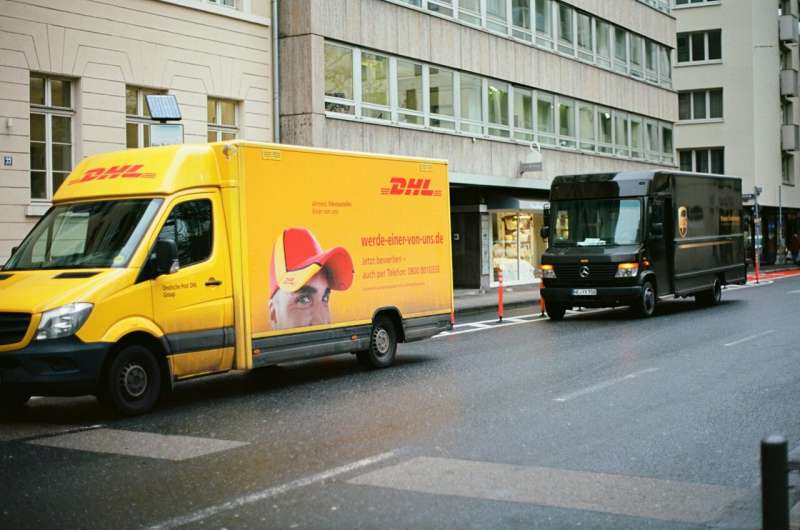This article has been reviewed according to Science X's editorial process and policies. Editors have highlighted the following attributes while ensuring the content's credibility:
fact-checked
proofread
Study of the impact of parking time on delivery optimization

Parking stinks in the big city, especially if you're driving a delivery truck and already running behind schedule.
But surprisingly, most delivery companies like UPS and FedEx don't consider the time it takes to park when they're designing the routes their drivers should take. They mostly just leave that to the drivers, who circle the block until they happen upon a spot near the drop-off point.
Ann Campbell, professor of business analytics and information systems in the University of Iowa's Tippie College of Business, says this wastes a lot of time and money for the delivery companies. It takes an average of nine minutes to find a parking spot in densely populated urban areas and that's a lot of time spent driving around looking for a place to park a van or a truck for one delivery.
So she helped develop a better way. She's co-author of a new study published in Transportation Research Part E: Logistics and Transportation Review that optimizes drivers' overall time, suggesting delivery companies can save time and money in places where parking is hard to find by developing routes that tell drivers what customers they should drive to and which they should walk to on foot.
The resulting routes visit customers in a different order than the way they would on routes now designed by large delivery companies like UPS, combining more customers per stop, and may have them park less and walk more.
Most companies use algorithms that design route maps for their vehicle drivers. These algorithms take into consideration such factors as distance, time of day, and even the number of left turns they have to take to build a map based on the shortest, quickest route to get from point to point to point.
Since the algorithm doesn't take parking into consideration, drivers are on their own when they get to the delivery address and have to figure out if it would make more sense to drive to the next drop-off or just keep the van where it is and walk there.
Campbell's study said a more effective route design is not just point to point but should also find a single parking spot that is most convenient for multiple deliveries. Then the driver can walk the packages to multiple addresses, which takes less time than getting back into the van and spending another average of nine minutes looking for a new parking spot.
Having the algorithm determine that most efficient parking location will make it easier for the driver and save time, Campbell said.
Her research team tested their idea by using data from densely populated Cook County in Illinois, with a population of more than 5 million, including the city of Chicago. It calculated delivery time would be cut by about 50% if companies designed routes built around walking, which means drivers can make twice as many deliveries during a day.
"Even if walking saves only 20 minutes during a delivery run, that adds up over the course of a day across a fleet of vehicles and you can see significant time savings," she said.
Campbell said some delivery companies are now starting to realize parking time is valuable and are factoring it into their routing algorithms. As online shopping continues to increase the number of packages they have to deliver, she said delivery companies are looking for any edge they can get to save even a few seconds off their routes.
But those designs are still hit and miss. For instance, one company unknowingly had its driver park in a place that would require they walk across a freeway to make a delivery.
More information: Sara Reed et al, Does parking matter? The impact of parking time on last-mile delivery optimization, Transportation Research Part E: Logistics and Transportation Review (2023). DOI: 10.1016/j.tre.2023.103391





















